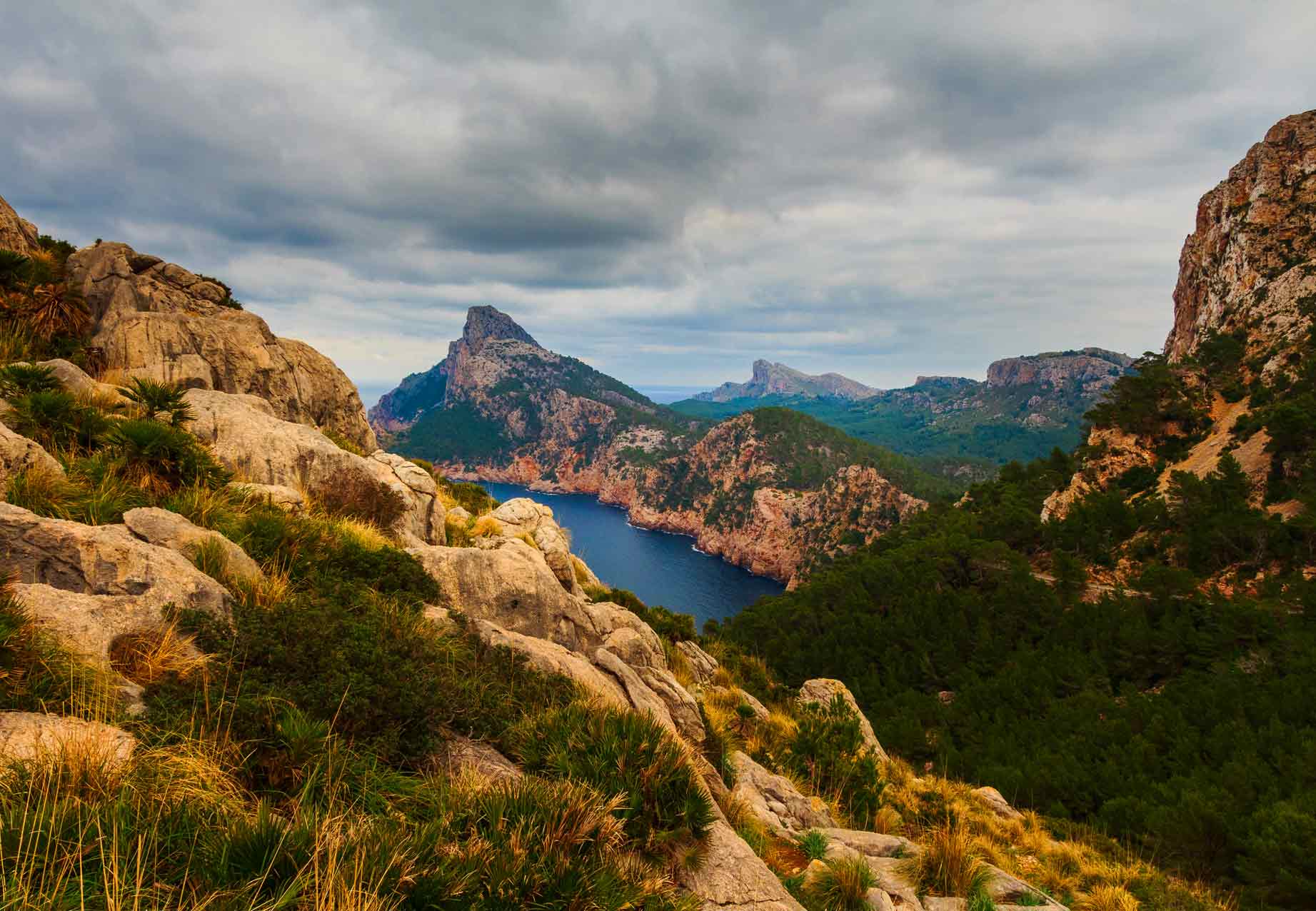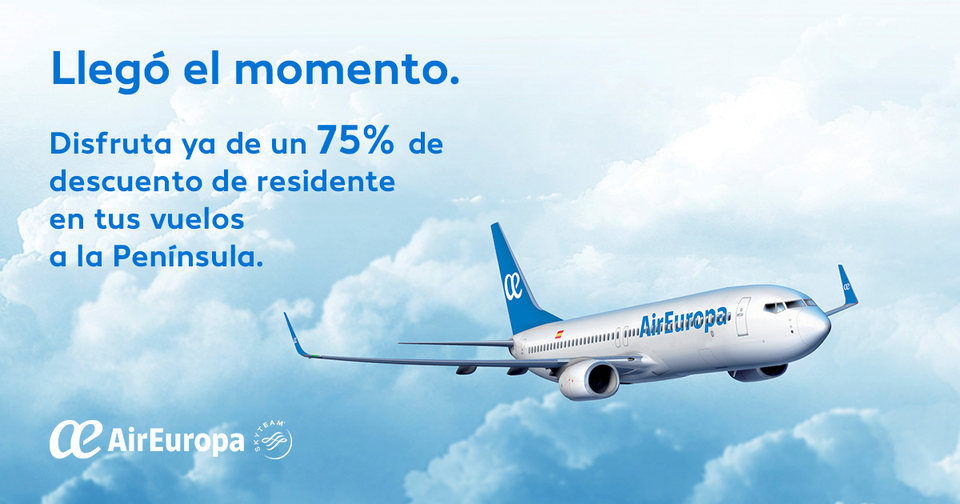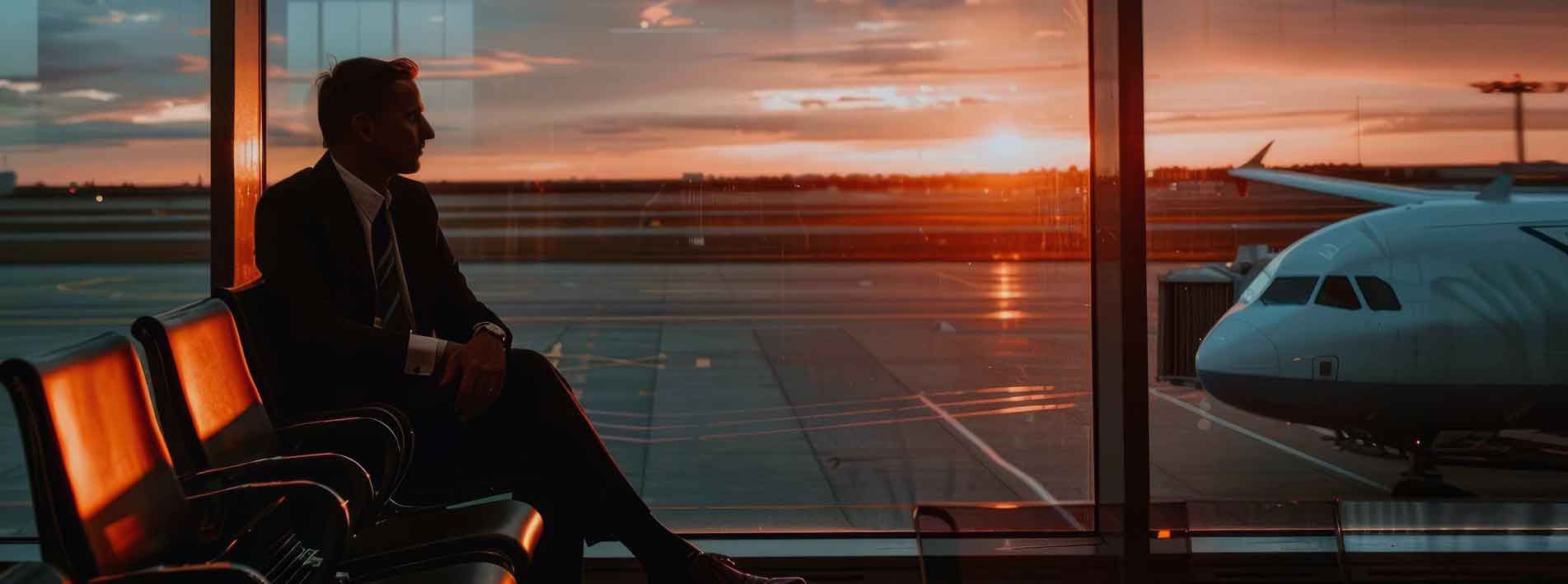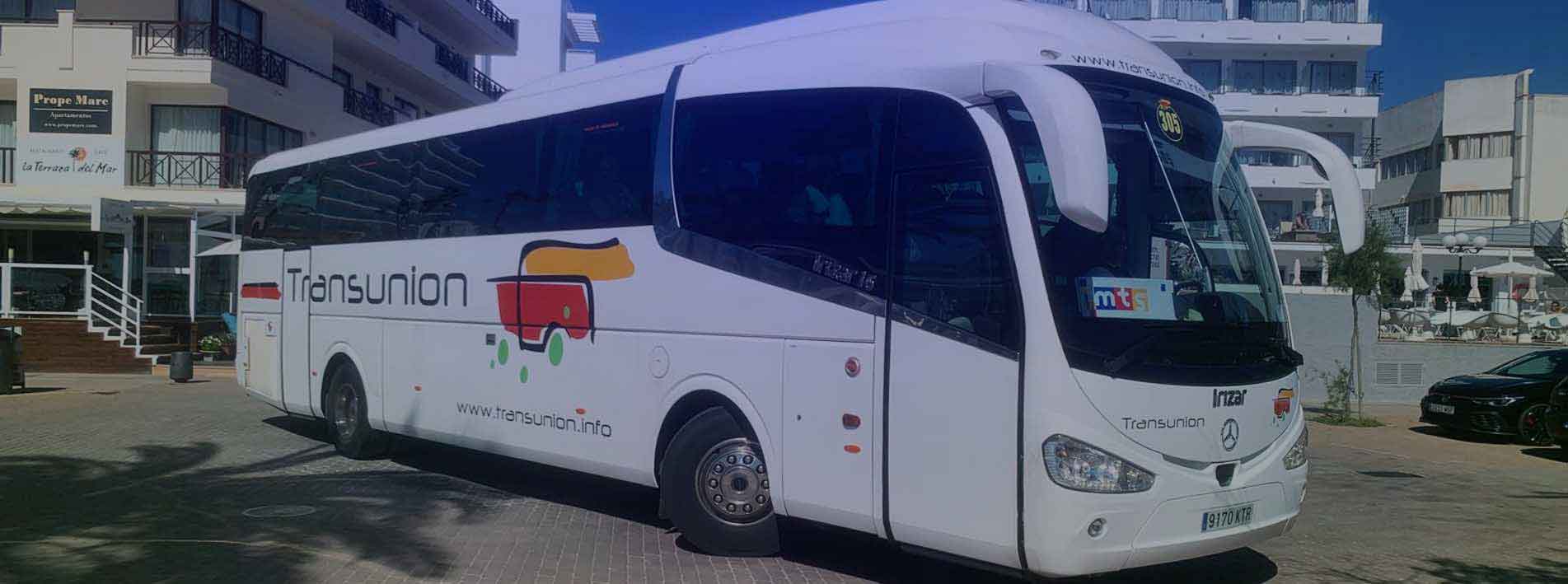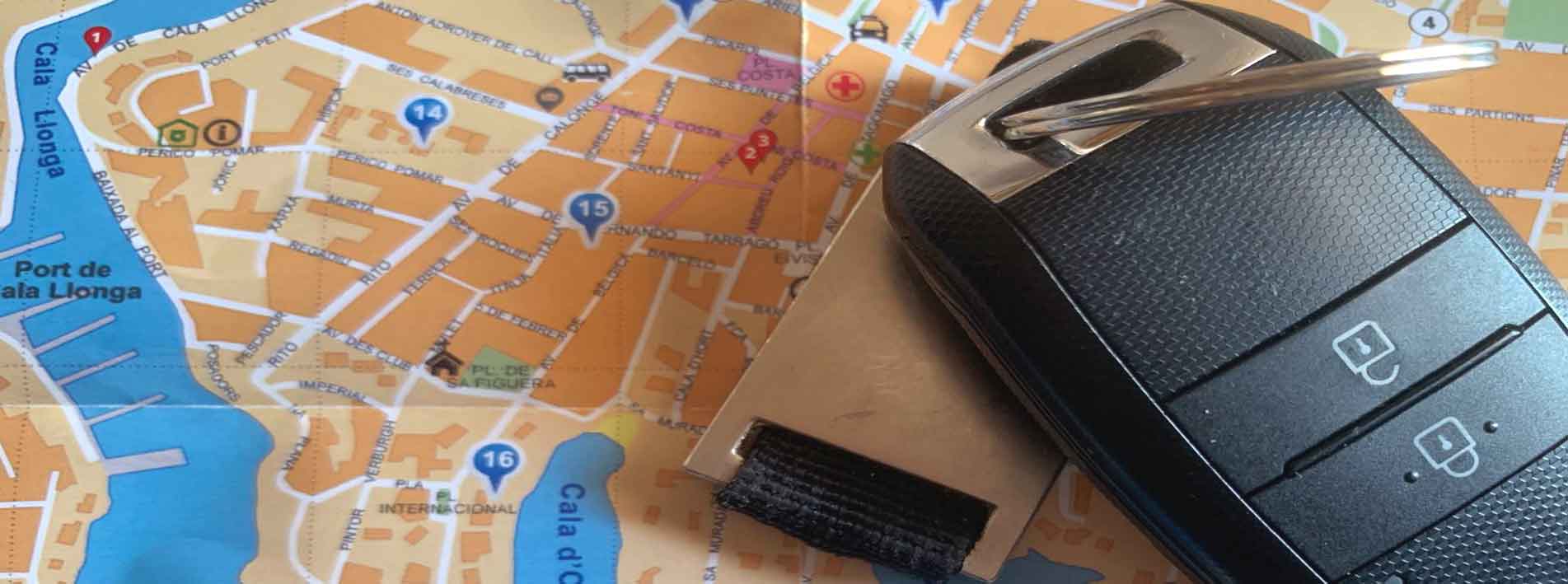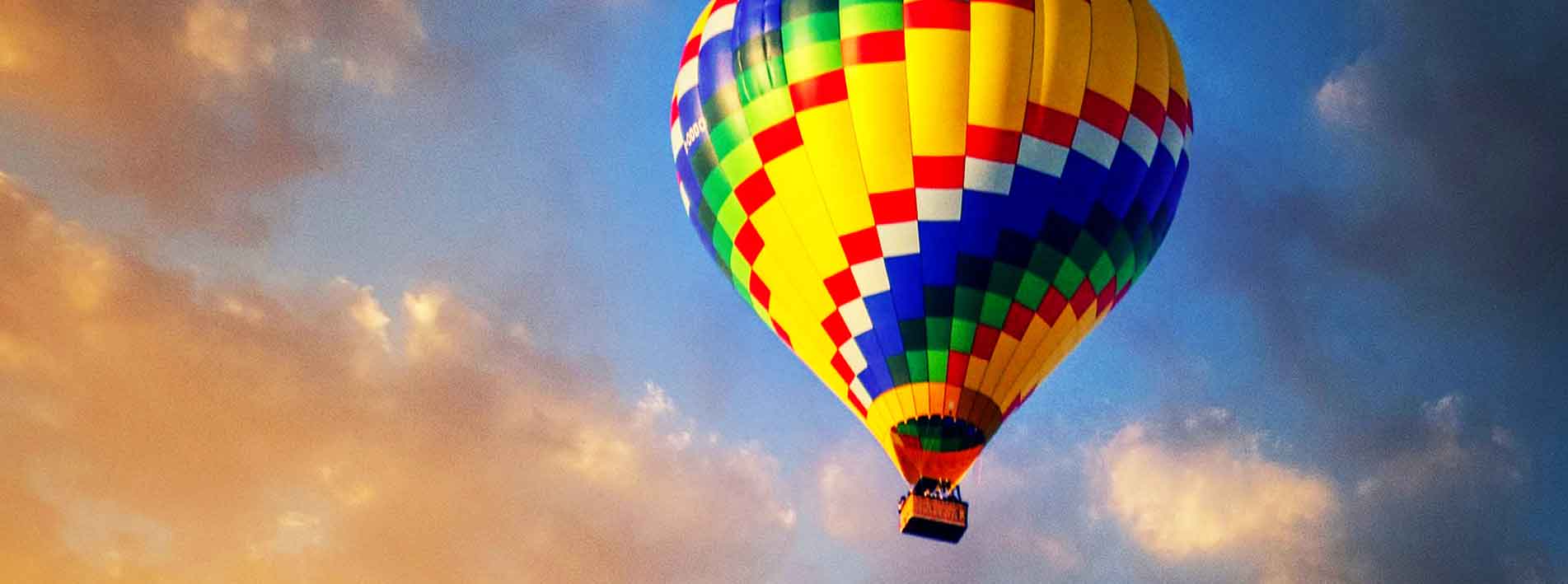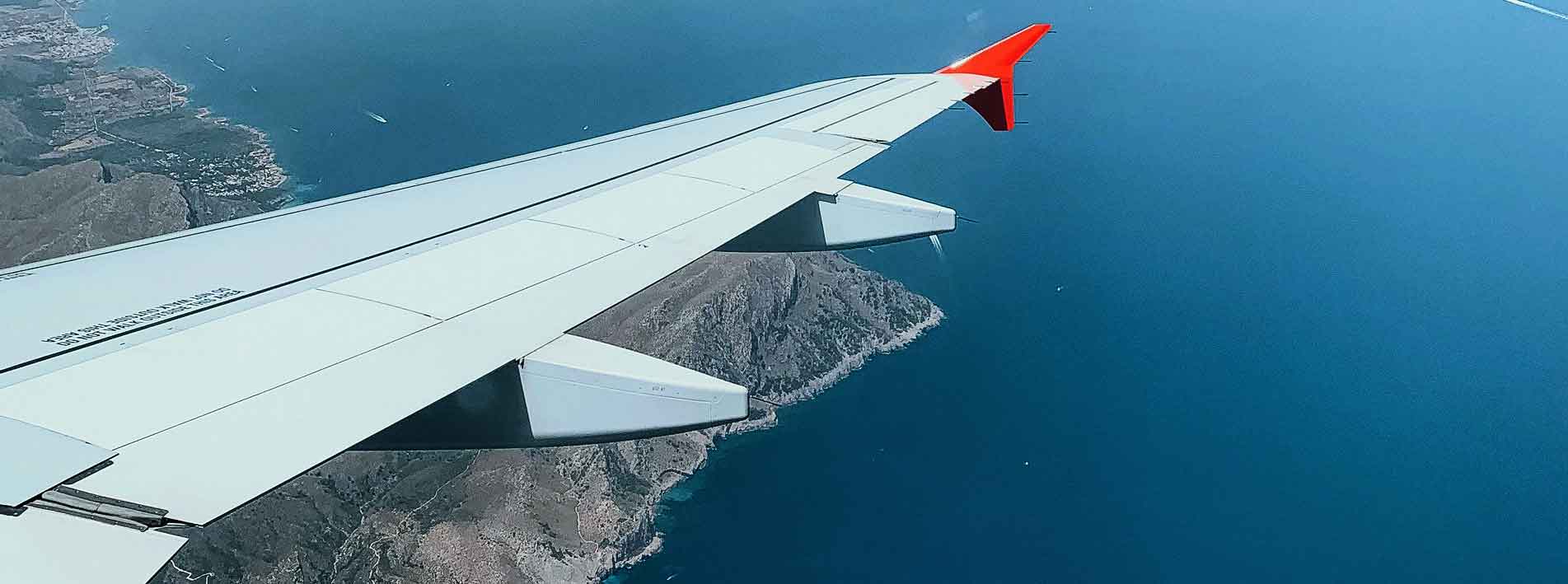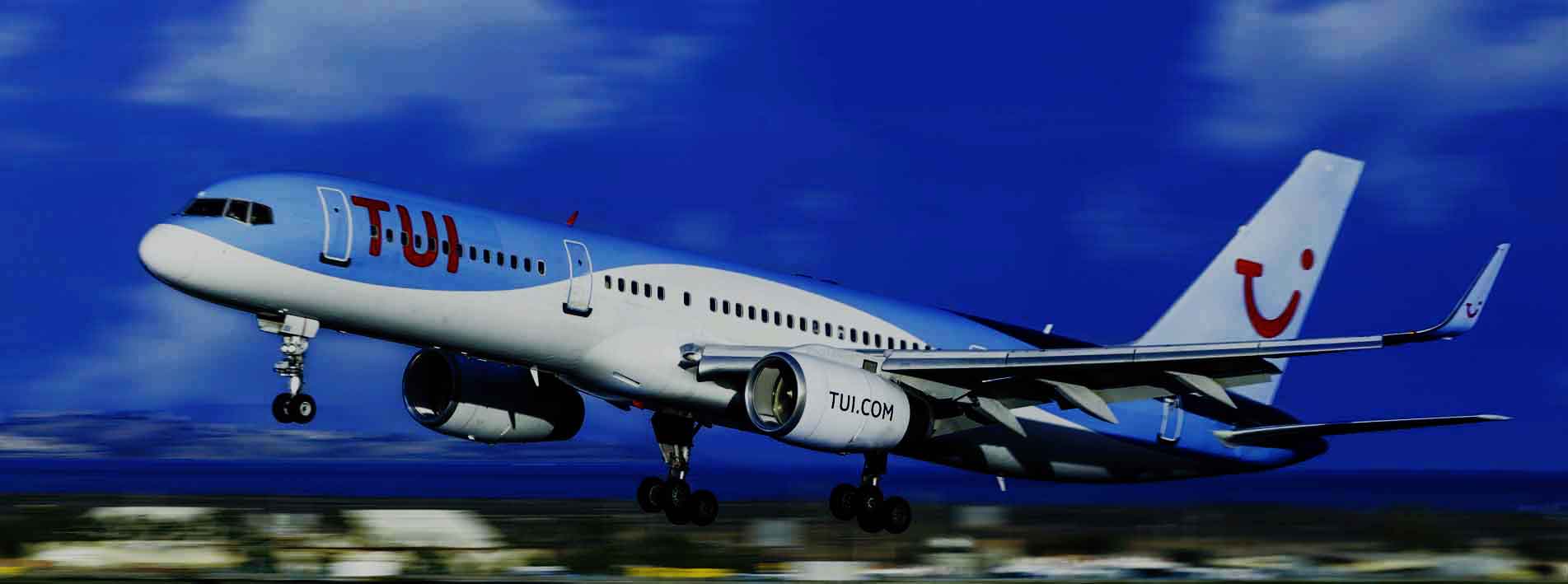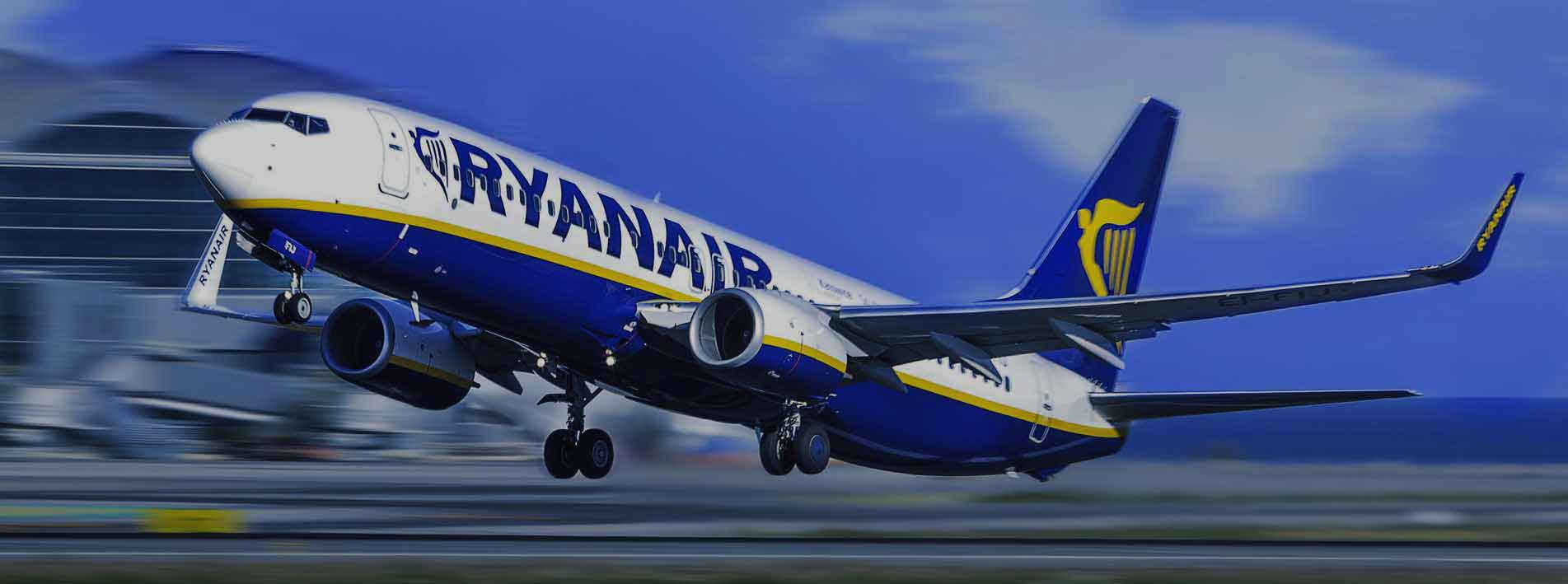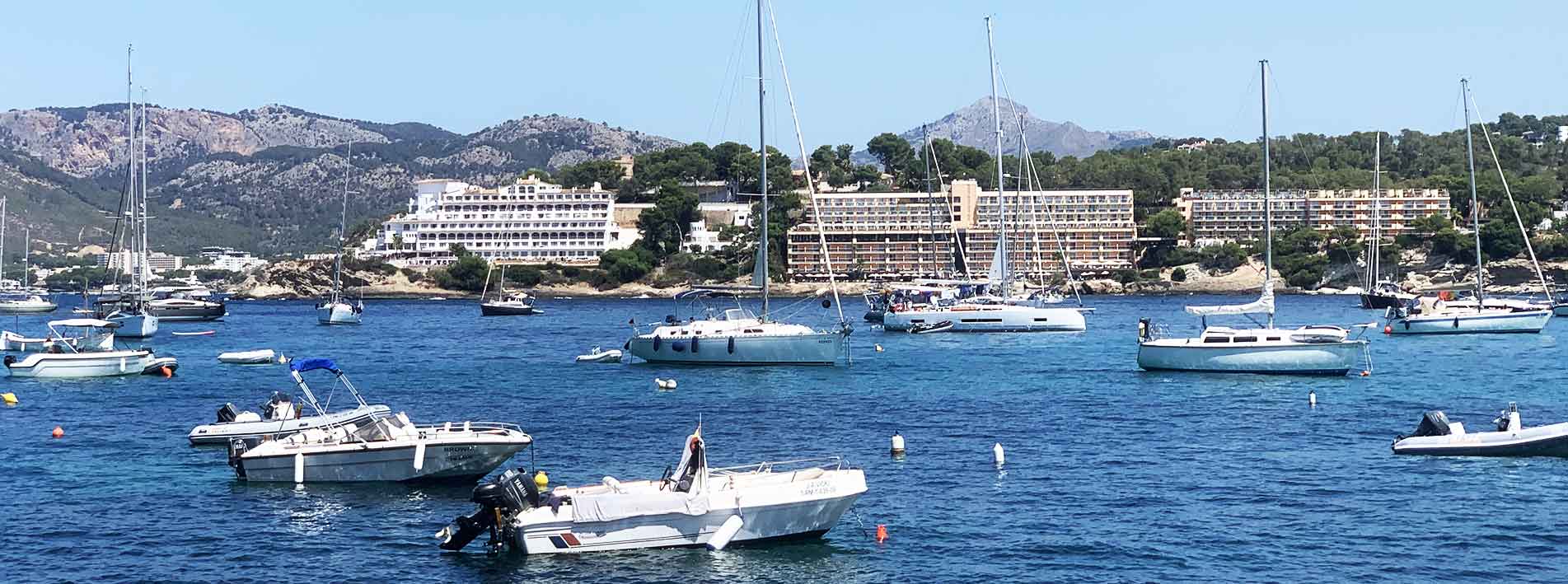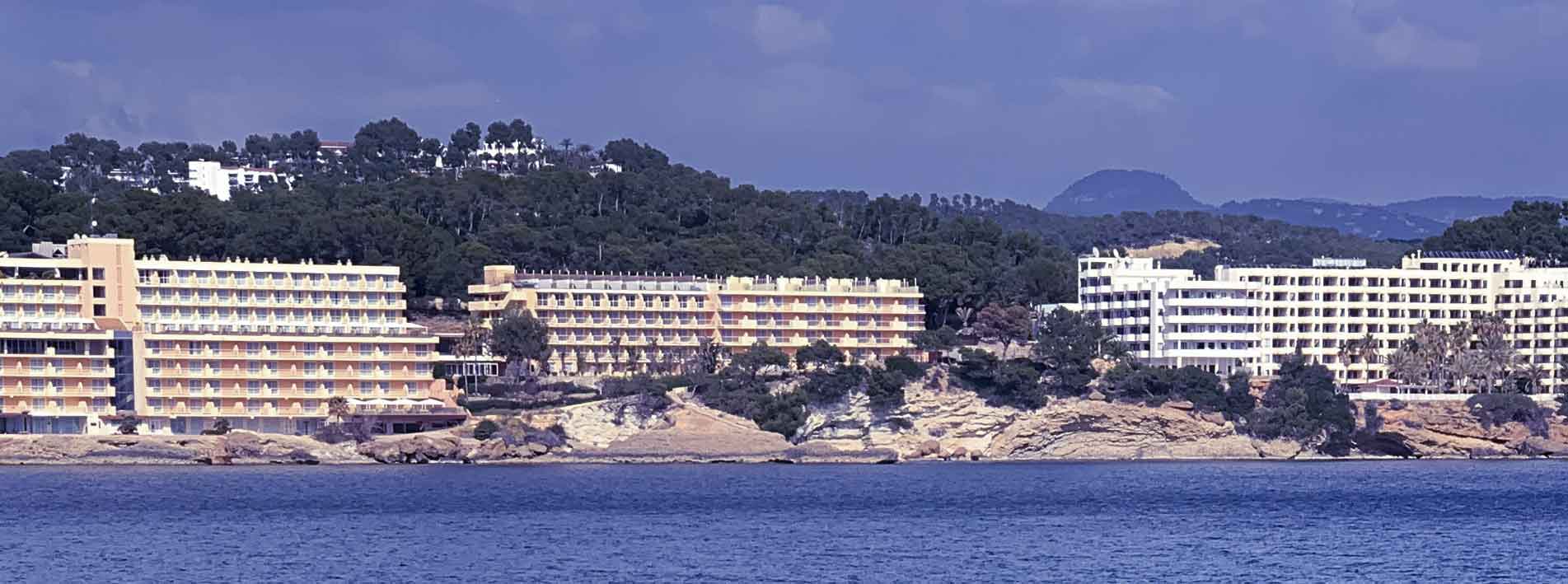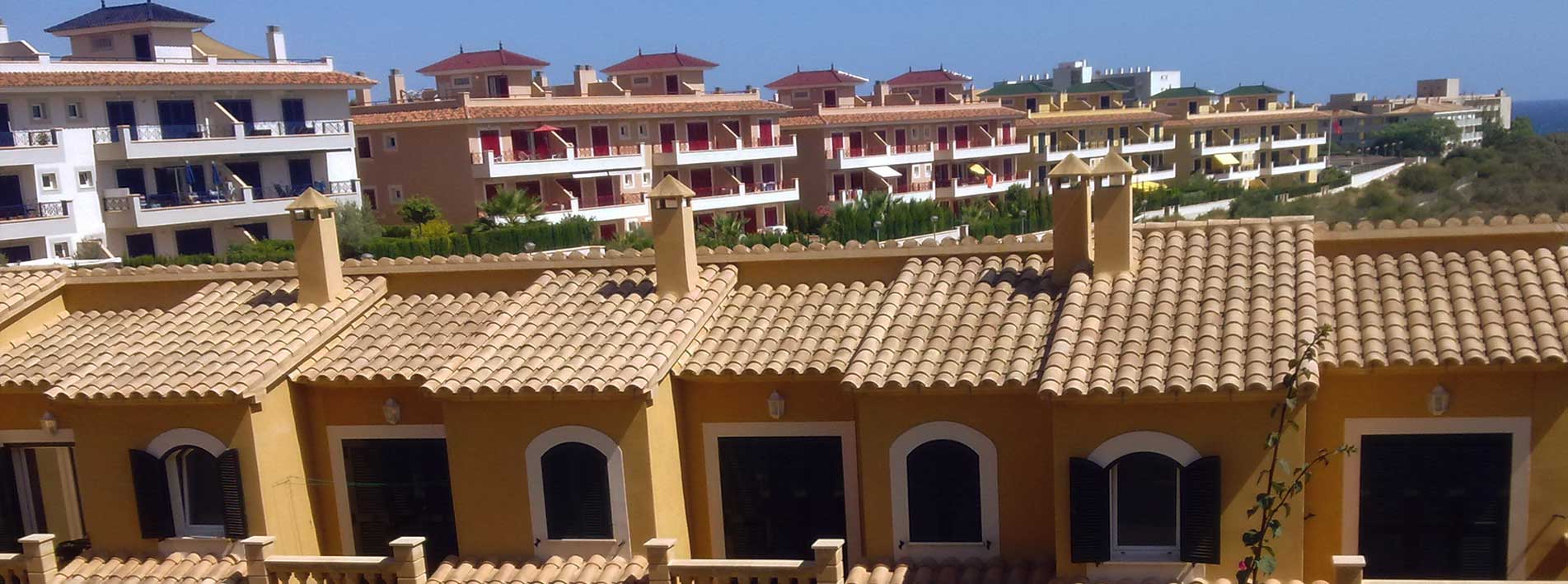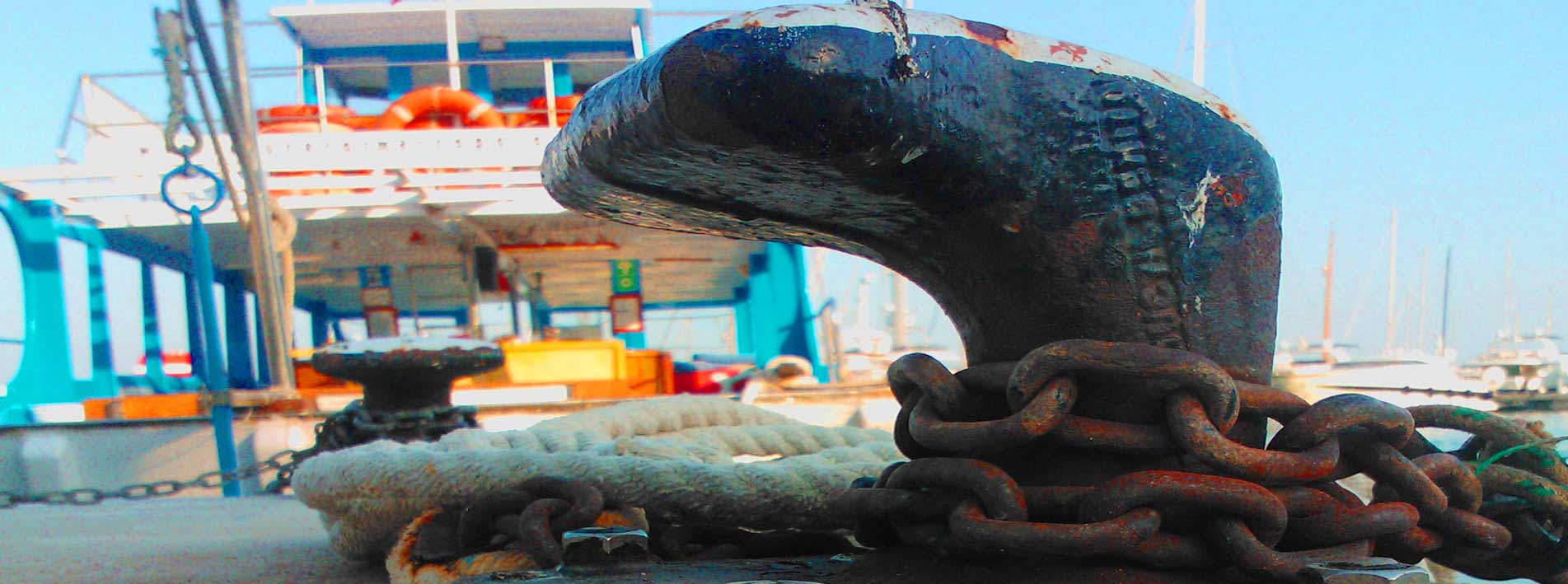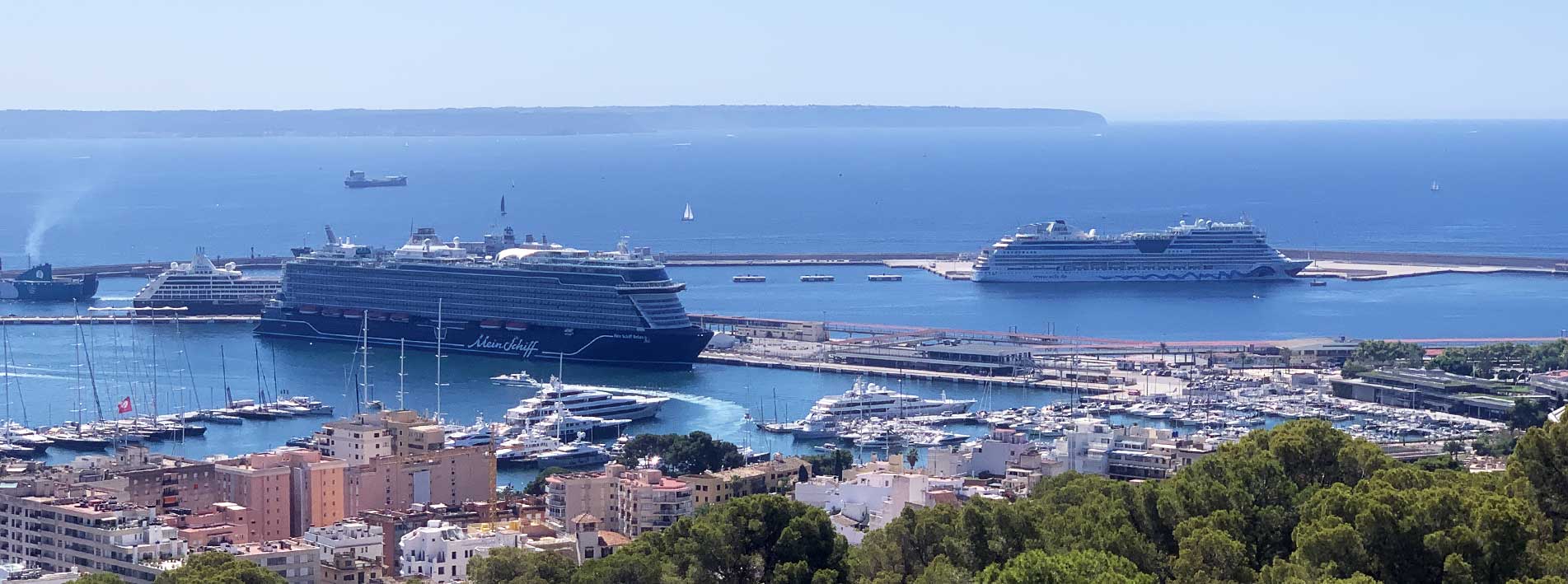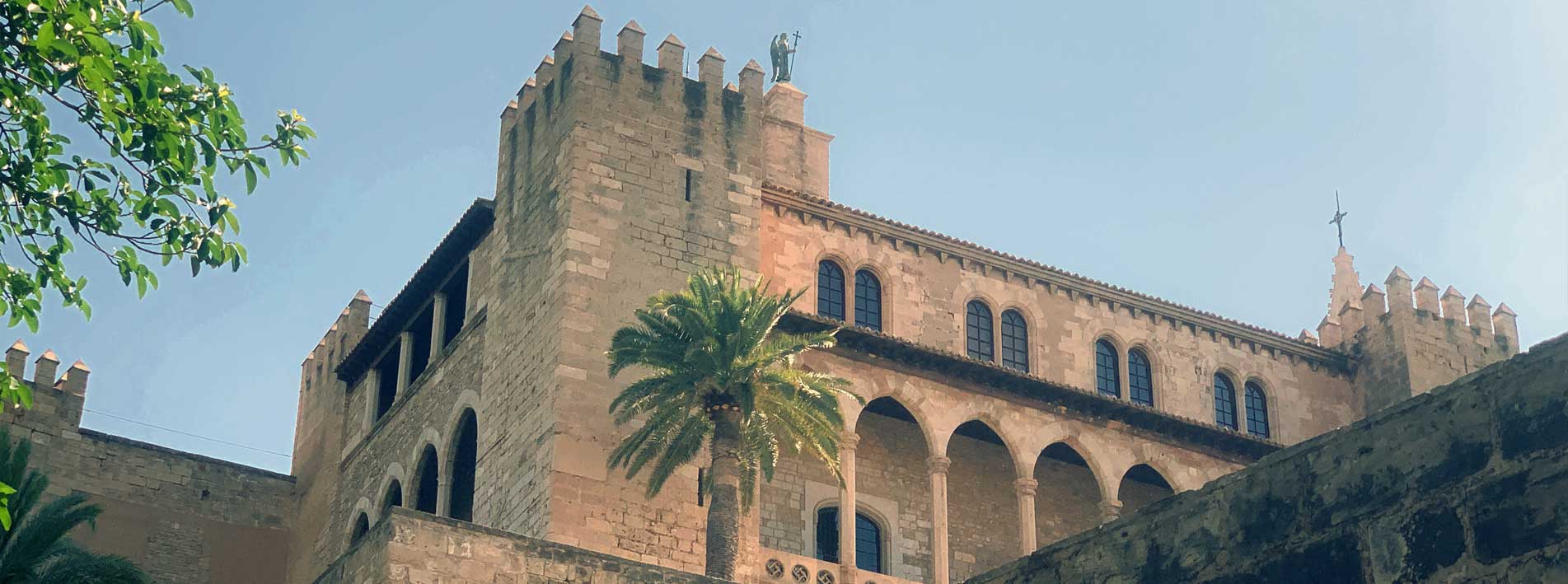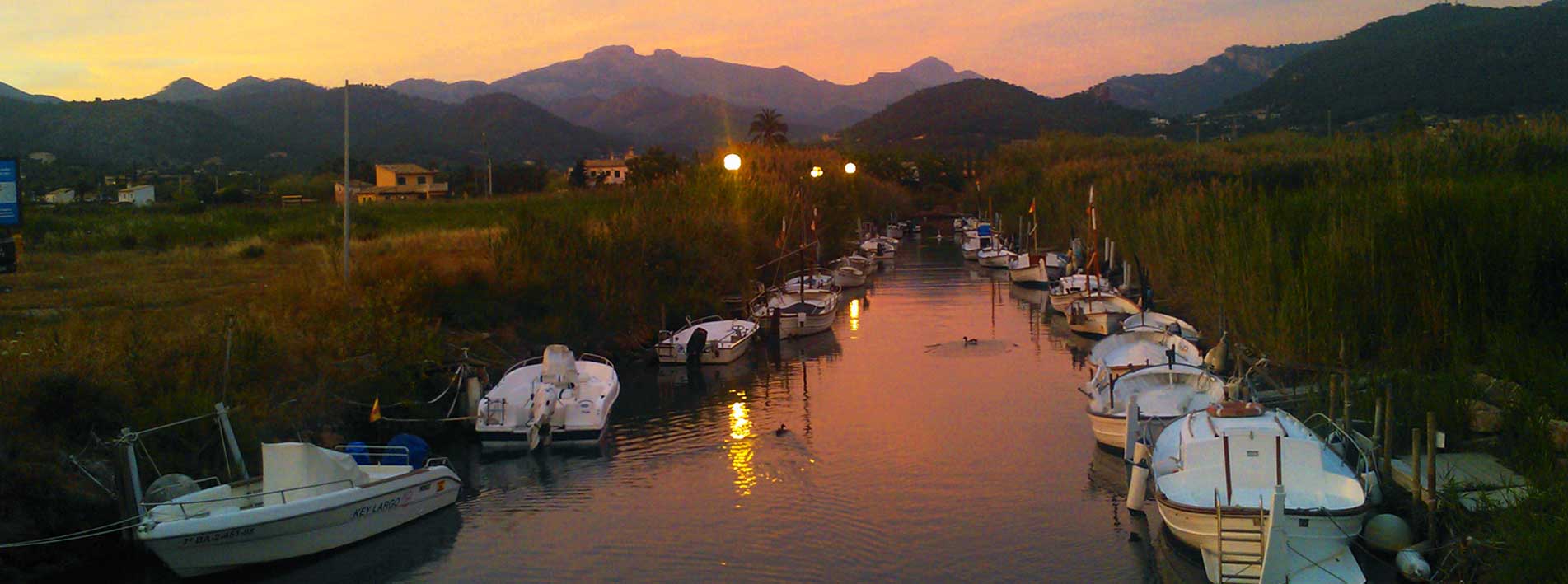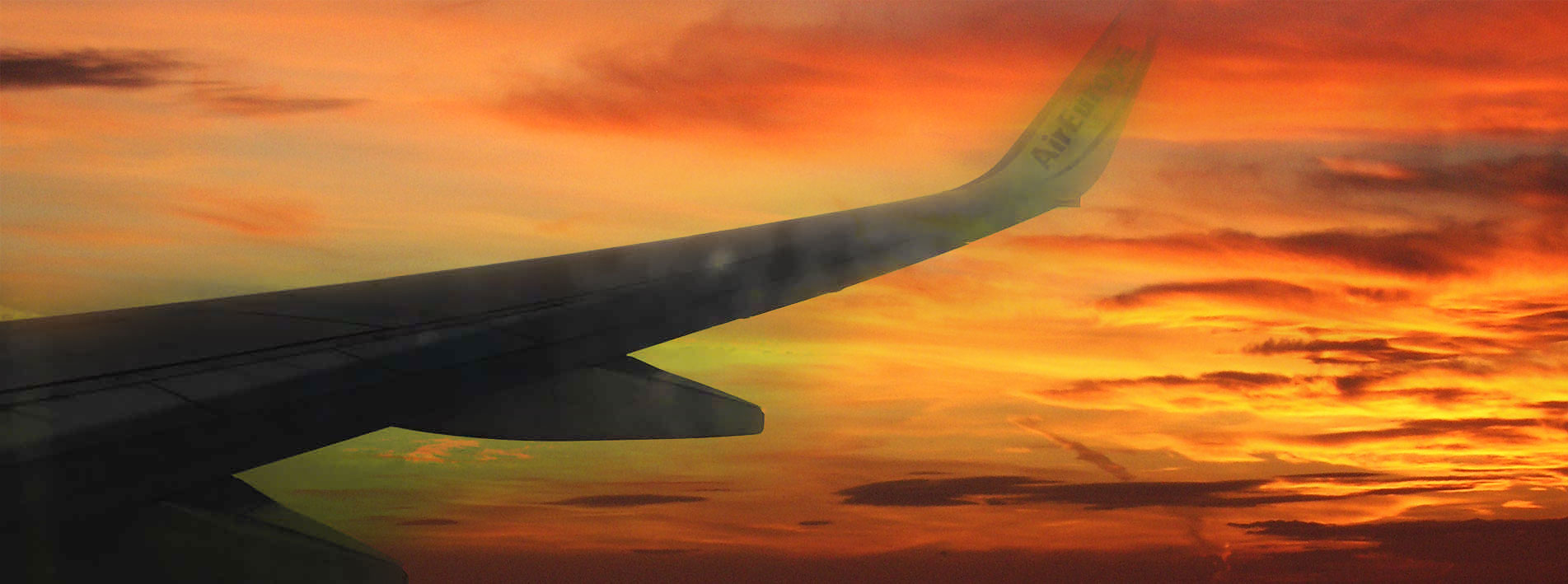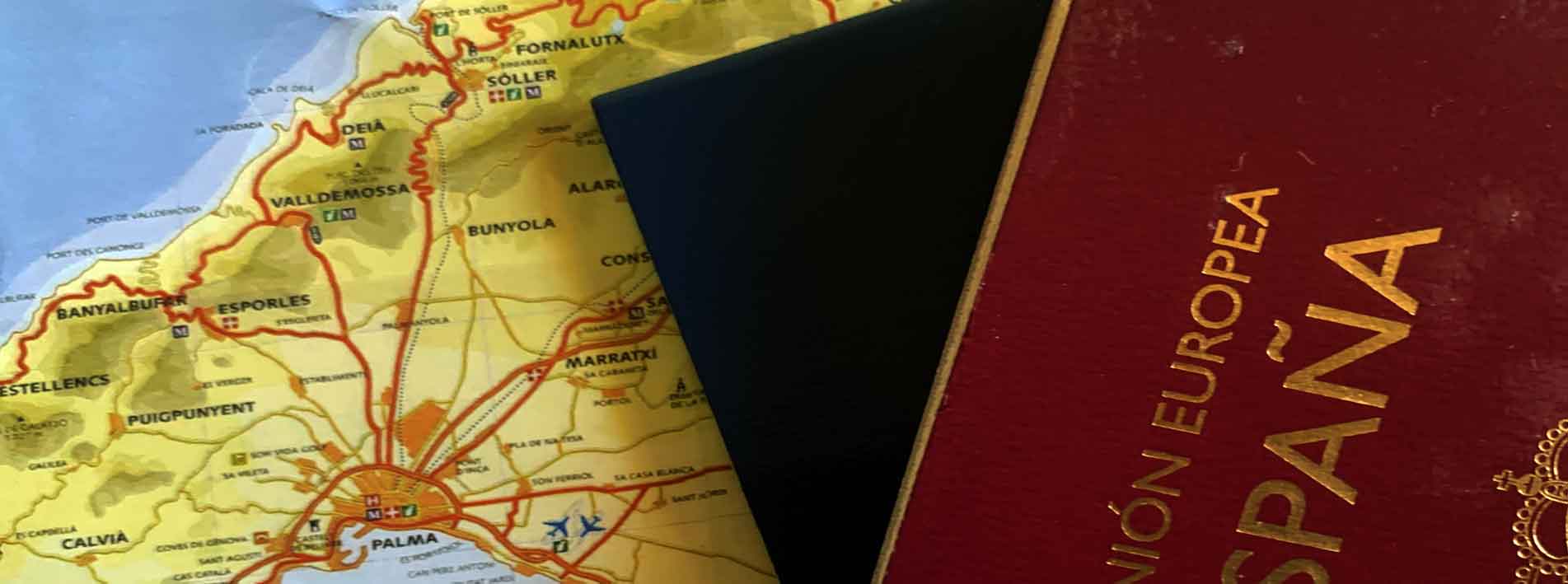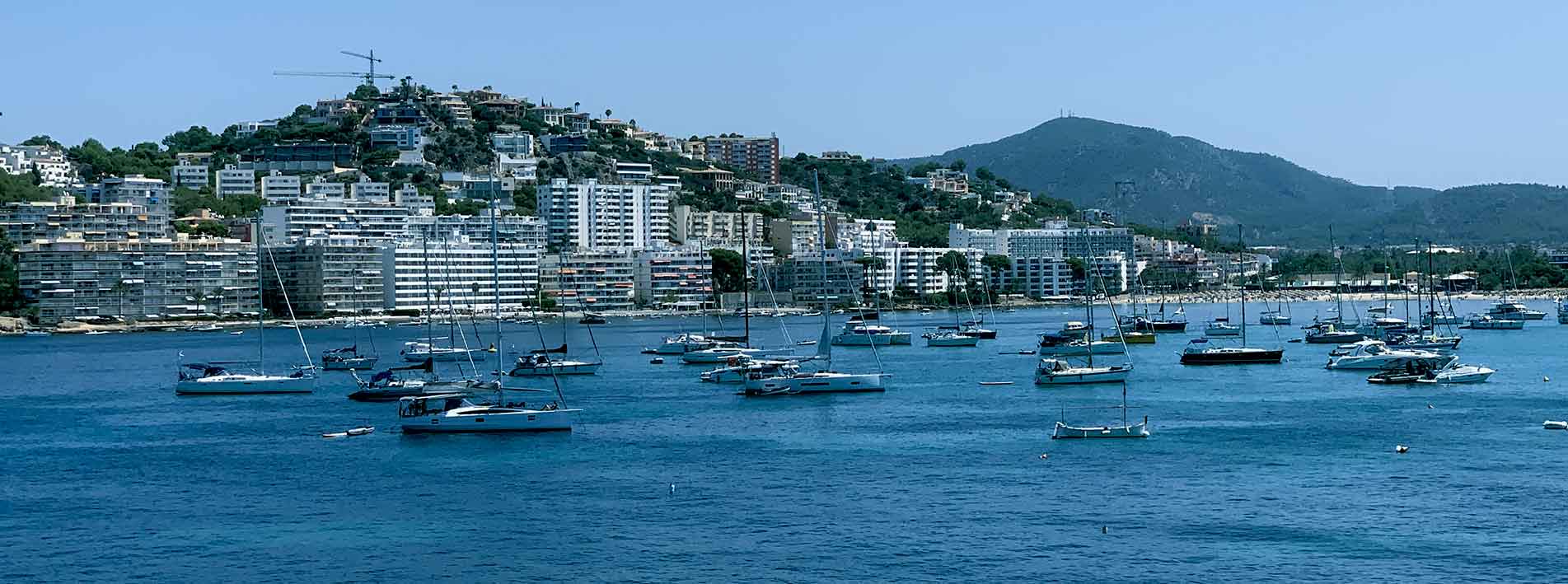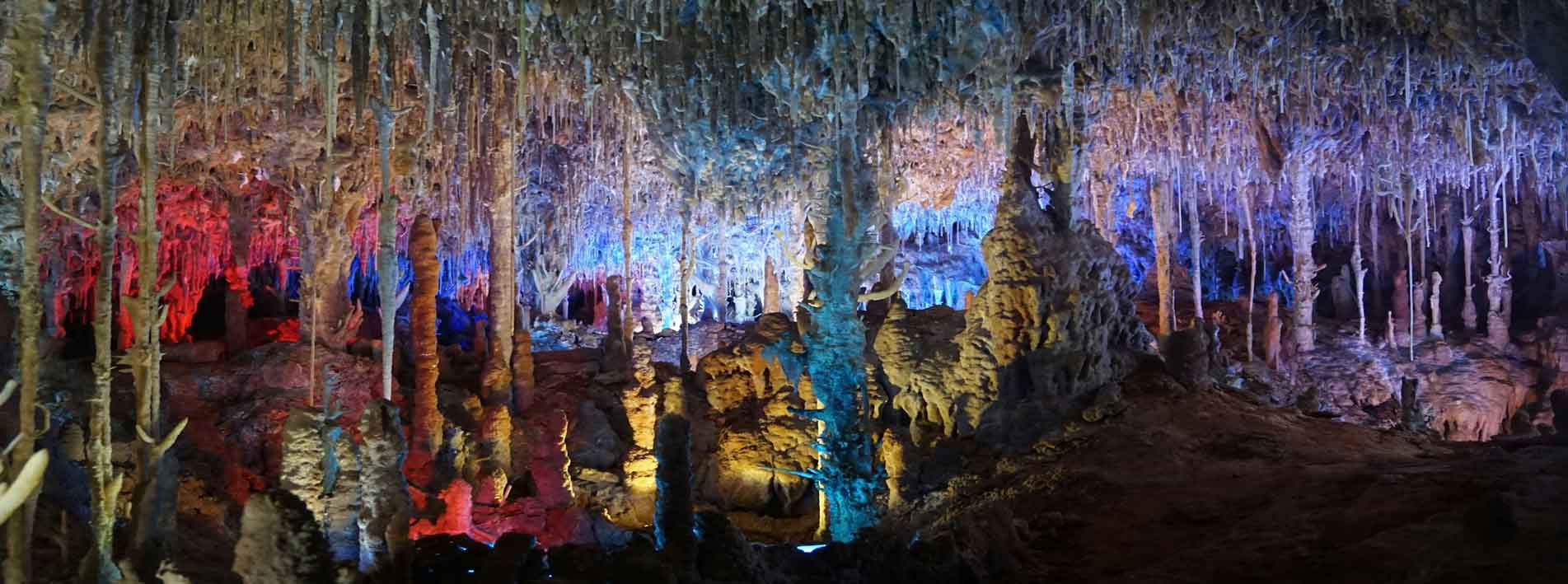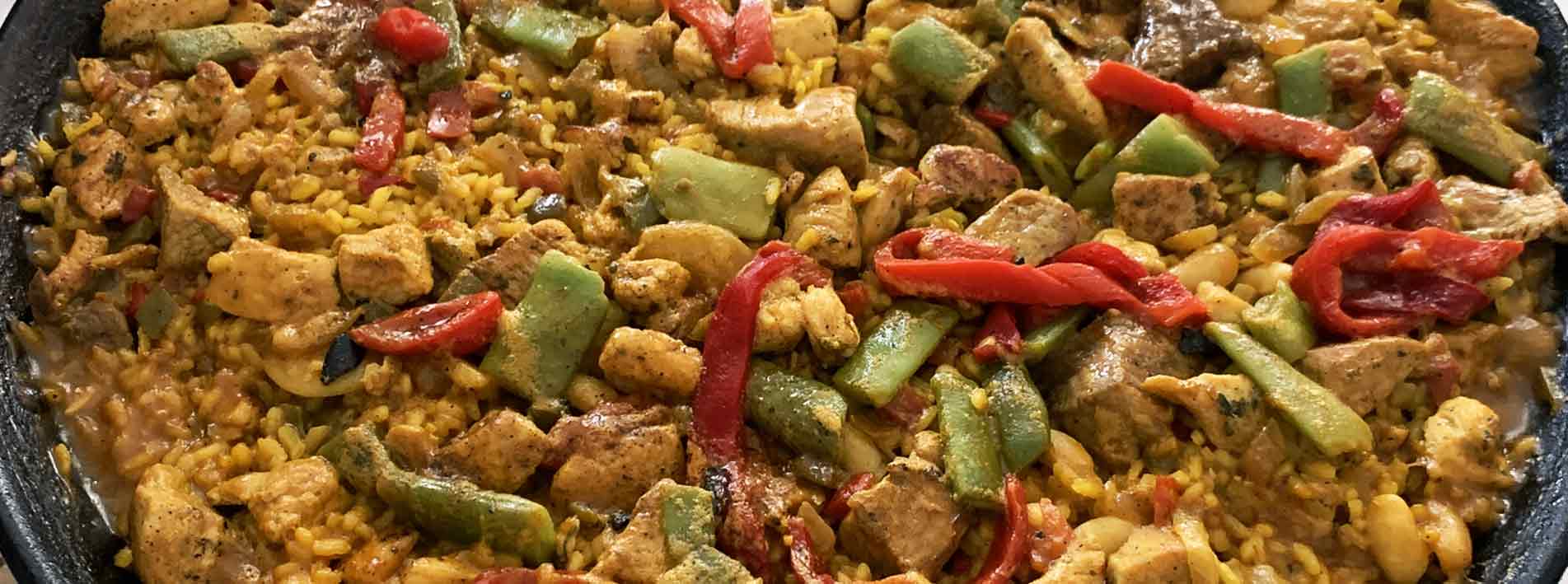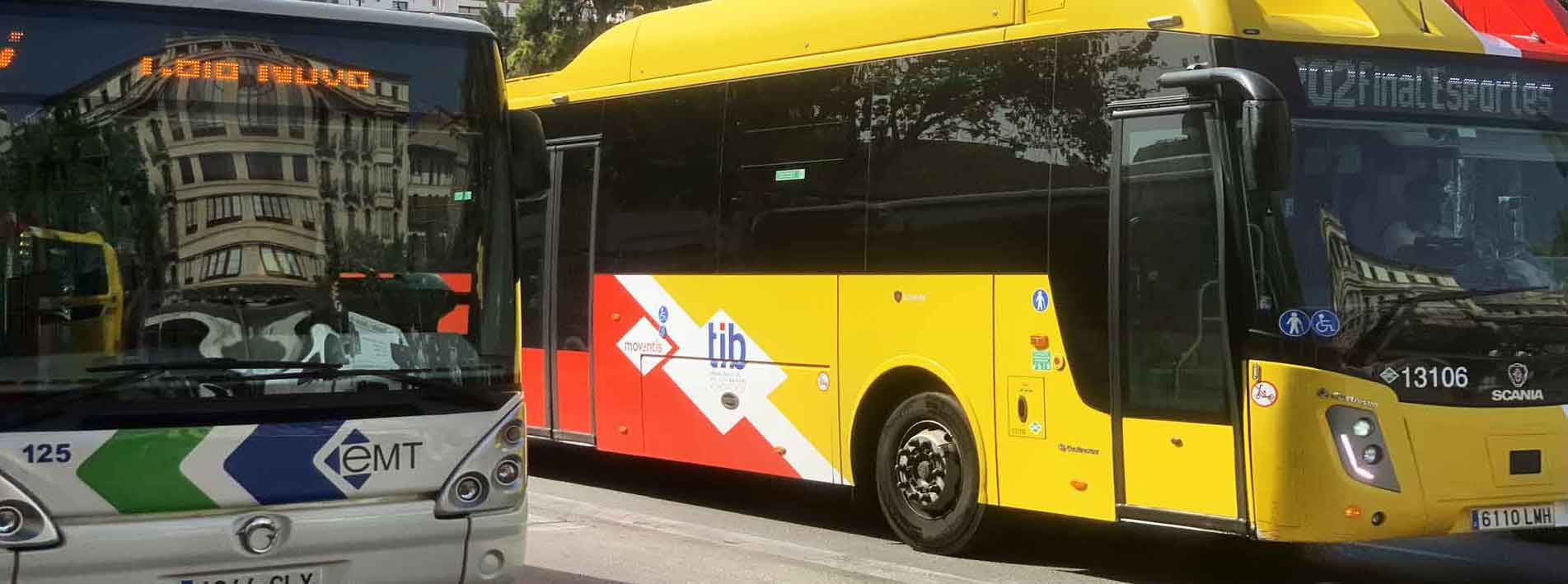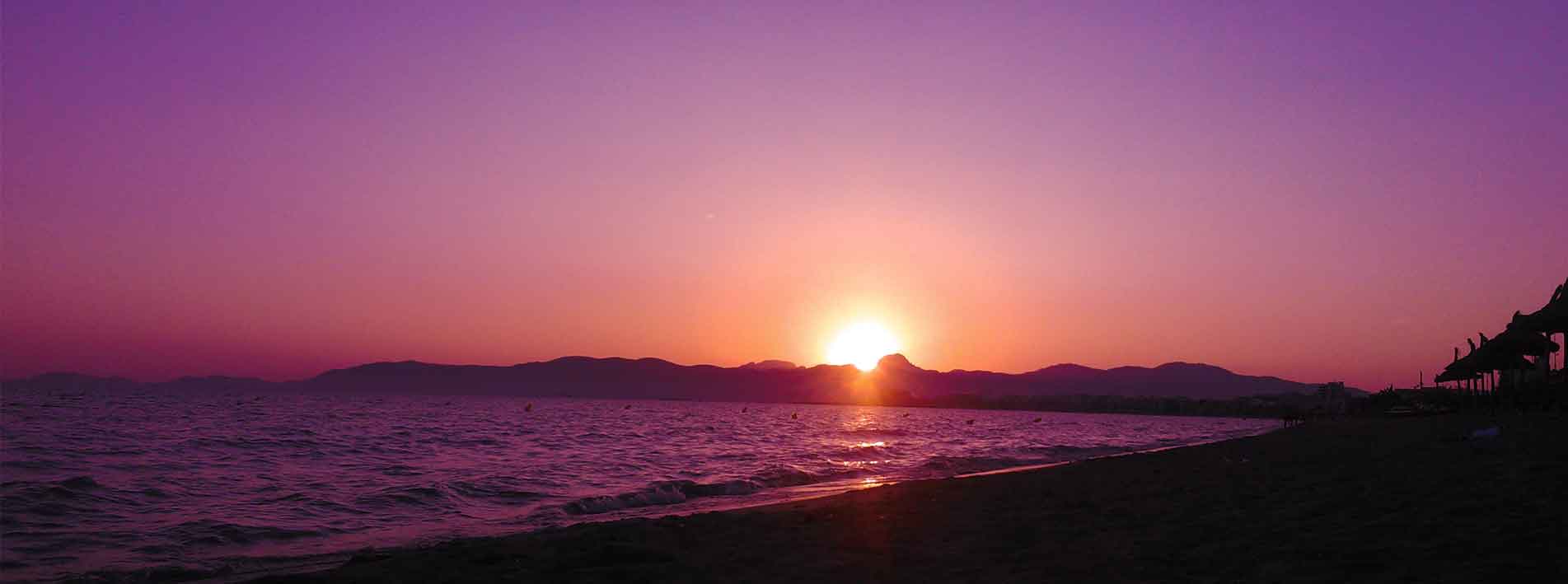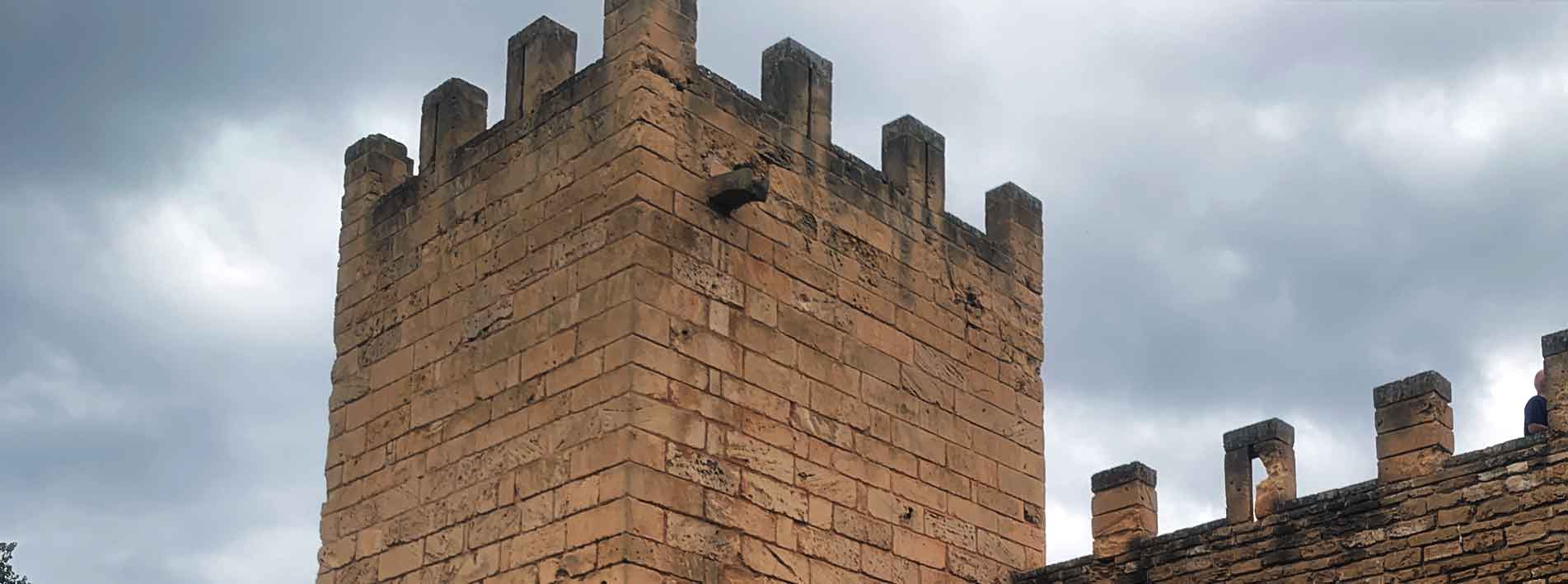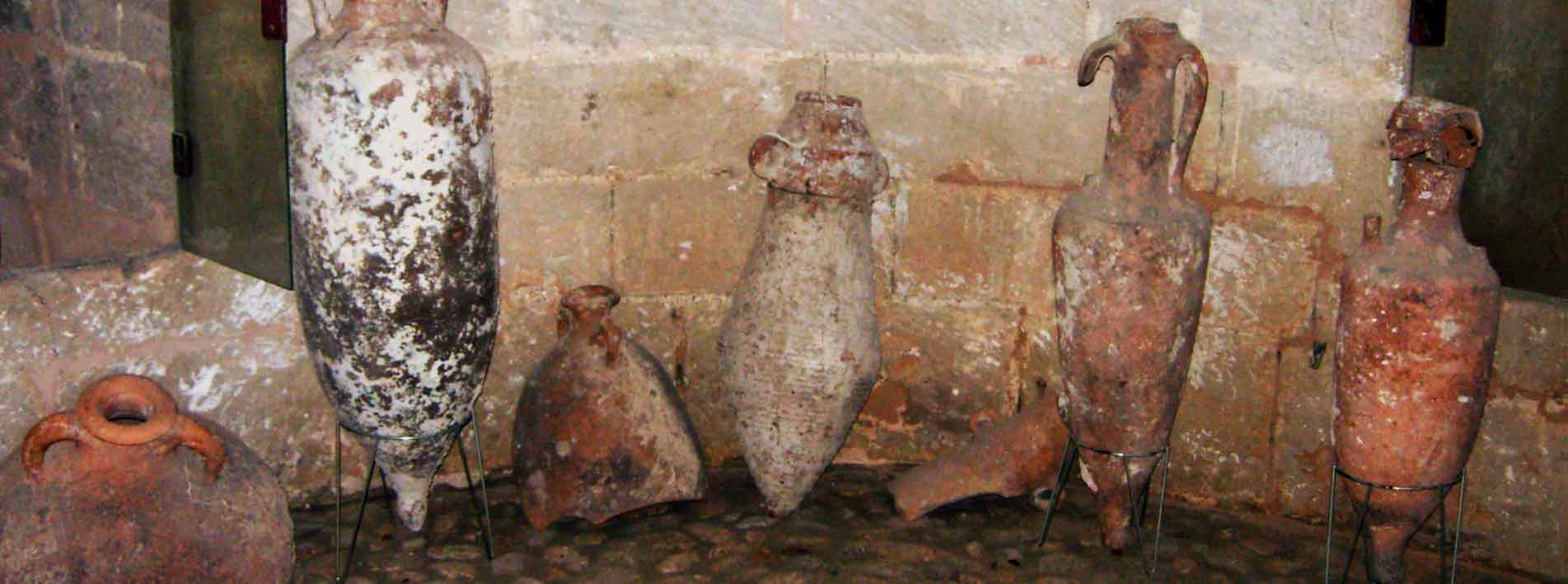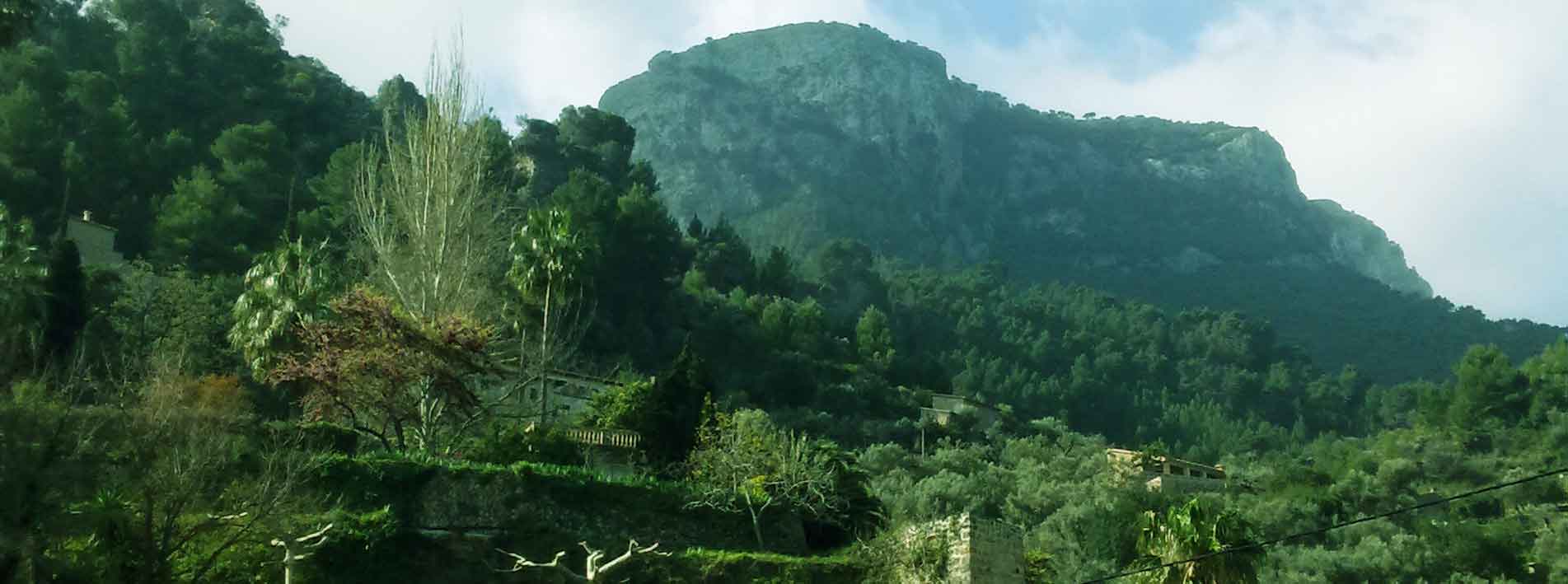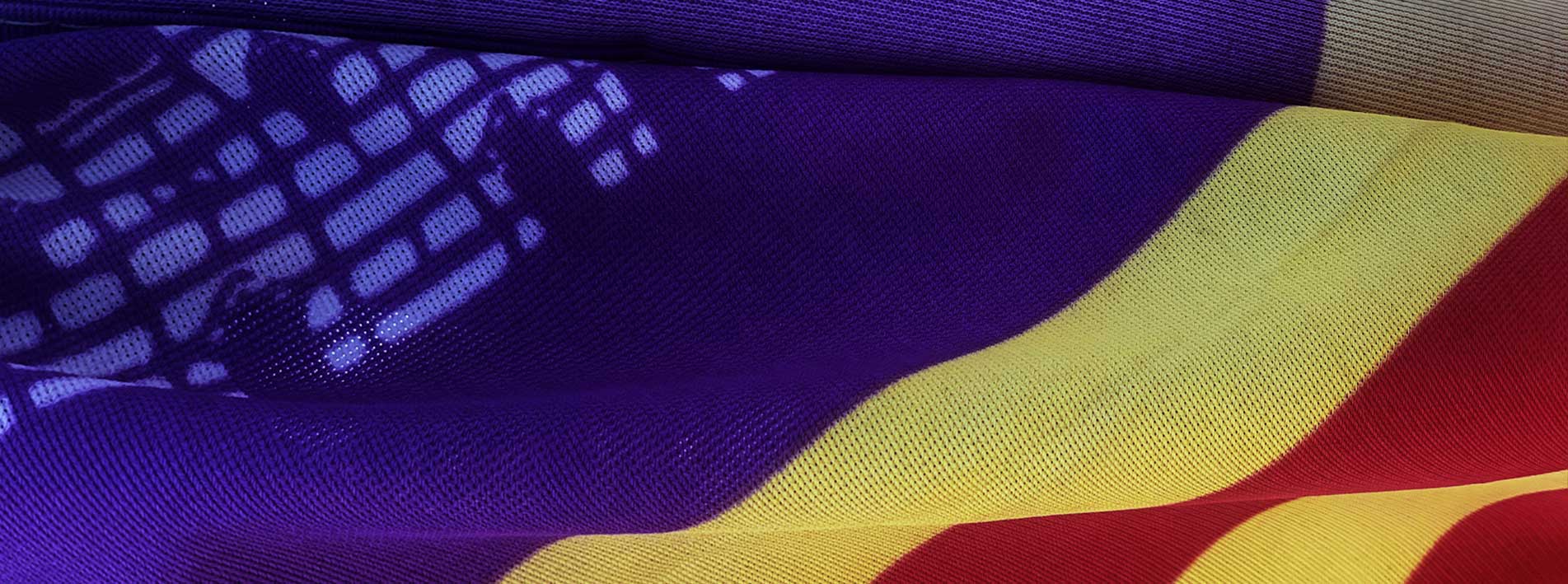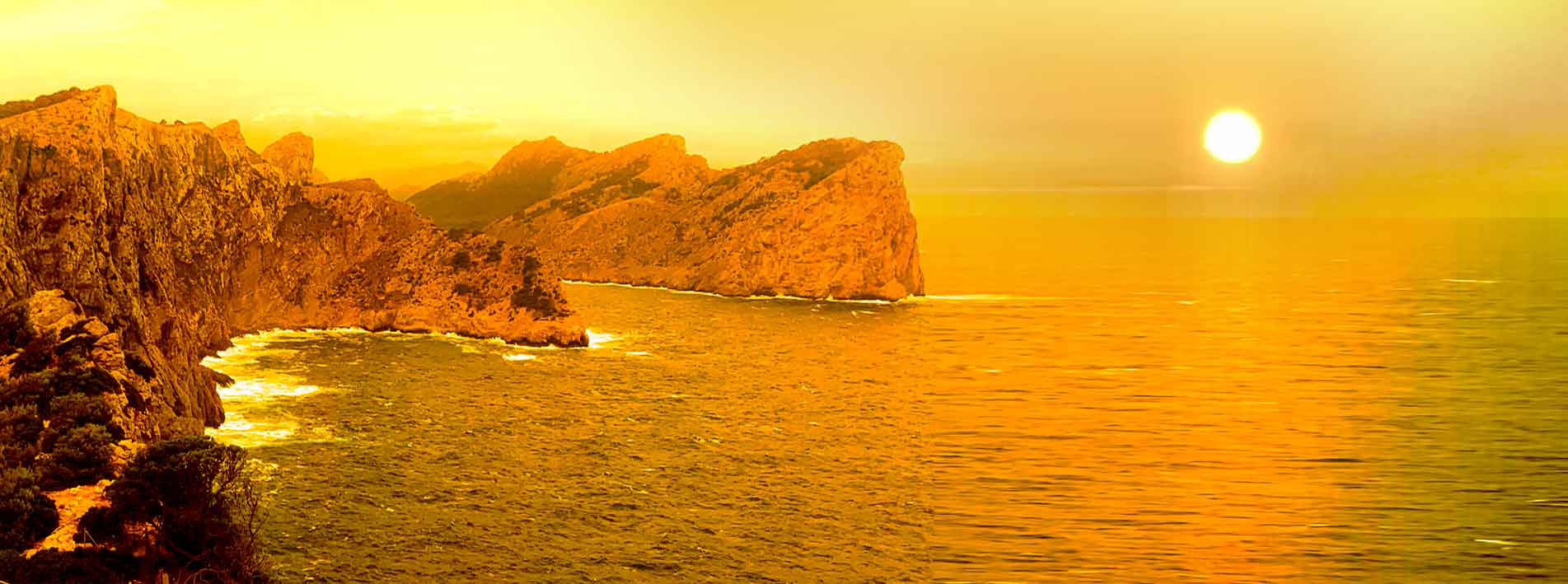Serra de Tramuntana
The Serra de Tramuntana is an important mountain range and is itself one of the six counties, districts or comarques of Mallorca. The Serra de Tramuntana mountain range was declared a World Heritage Site by UNESCO and is characterized by its rugged landscape, steep cliffs, high peaks such as Puig Major (1,445 m above sea level) and karstic relief with caves and canyons.
Its cultural landscape is the result of thousands of years of interaction between humans and nature, visible in the terraces, water mills and irrigation systems that have transformed the mountain slopes for the cultivation of olive and citrus trees, vines and vegetables.
Place names in the Serra de Tramuntana
The place names in the Serra de Tramuntana comarque are directly related to its name, which comes from the north wind or “tramontana,” which gives this Mallorcan mountain range its name. Other important place names refer to its landscape, such as the names of its peaks (Puig Major) and ravines (Sa Fosca) and to its history, such as names of Arabic origin or defensive and agricultural constructions (Banyalbufar, dry stone terraces).
Names of geographical origin
Tramuntana: The name “Tramuntana” comes from the north wind that blows in the region. It comes from the Latin trāns montāna, which means “across the mountain” and refers to a north wind.
Orography and geology of the Sierra de Tramuntana
Altitude: The highest peak is Puig Major (1,445 m), followed by Puig de Massanella (1,364 m).
Karst relief: It has numerous caves, chasms and deep canyons, such as the famous Torrent de Pareis.
Extension: It stretches along the northwest coast of Mallorca, from Andratx to Cape Formentor.
Human transformation: It has been transformed over the centuries by agriculture, creating terraces and plots for cultivation.
Hydraulic systems: It has a complex water management network, which includes mills, wells and dry stone constructions of Arab and feudal origin.
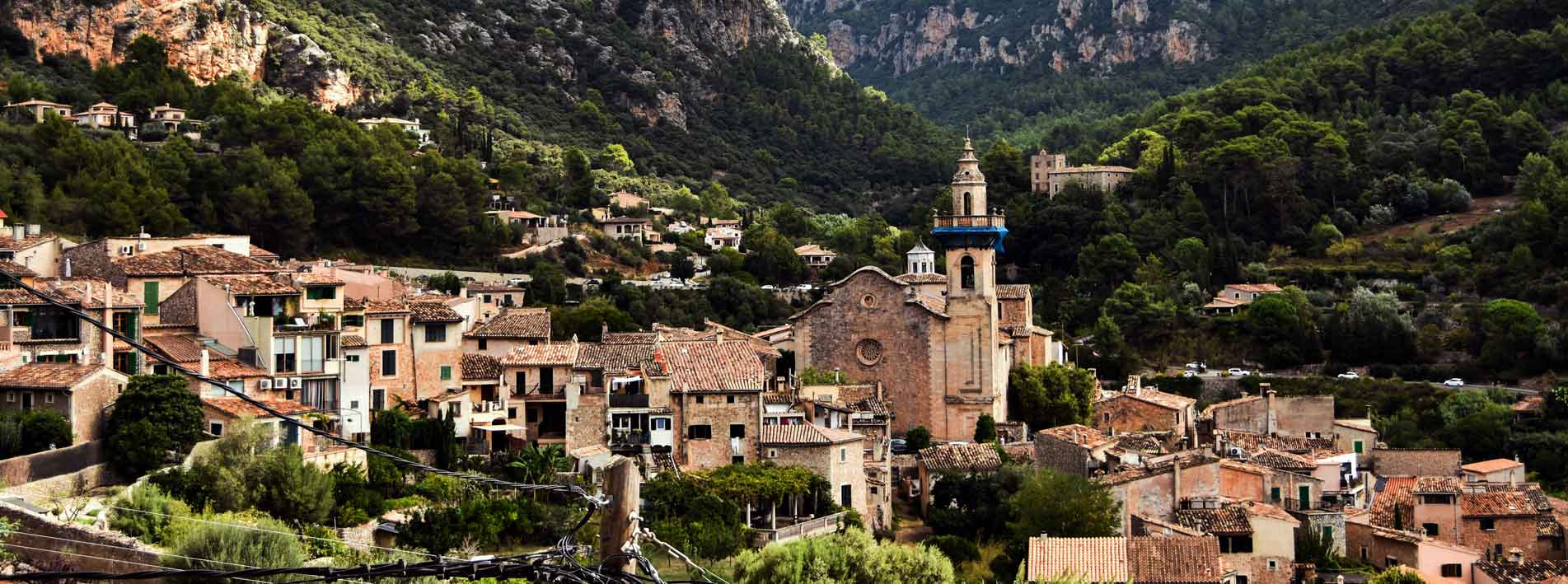 Biodiversity of the Serra de Tramuntana comarque
Biodiversity of the Serra de Tramuntana comarque
The mountain range is an important center of biodiversity, with endemic flora and fauna and a destination for artists, writers and nature lovers due to its beauty and the famous “Camino de Piedra Seca” (Dry Stone Path).
Endemic species: The mountains are a refuge for endemic Balearic flora. Their rich flora and fauna include numerous endemic species such as orchids, ferns and holm oak forests.
Natural protected areas: These include areas of high ecological value such as the Sa Dragonera Islet Natural Park and the Torrent de Pareis.
Flora and fauna in the Serra de Tramuntana
The mountain range is home to 65 of the 97 endemic species of the Balearic archipelago and 65 of the 68 species exclusive to Mallorca, according to data from the Serra de Tramuntana Consortium. Among the unique plants that thrive here are various species of orchids and ferns, as well as the Penyal violet, rosemary and lavender.
The Serra de Tramuntana is the native forest that formed most of the region, with centuries-old specimens of historical and cultural value. Noteworthy here are: La Garriga de acebuche, a plant formation typical of warm zones, which predominates at low altitudes and is adapted to drought conditions. The calcicolous scrub is composed of rosemary and heather and is located in rocky coastal and mountain areas. Meanwhile, the Balearic summit vegetation is a low and discontinuous formation on wind-exposed peaks with poor soil.
The most notable fauna that can be observed in the region consists of endemic species such as the Balearic midwife toad (Ferreret toad), a small protected amphibian. This area is also home to martens, genets, weasels, hedgehogs and Mallorcan goats.
The skies above the mountains are flown over by birds of prey such as the black vulture, the booted eagle and Eleonora’s falcon. Colonies of seabirds such as cormorants and common gulls can also be seen.
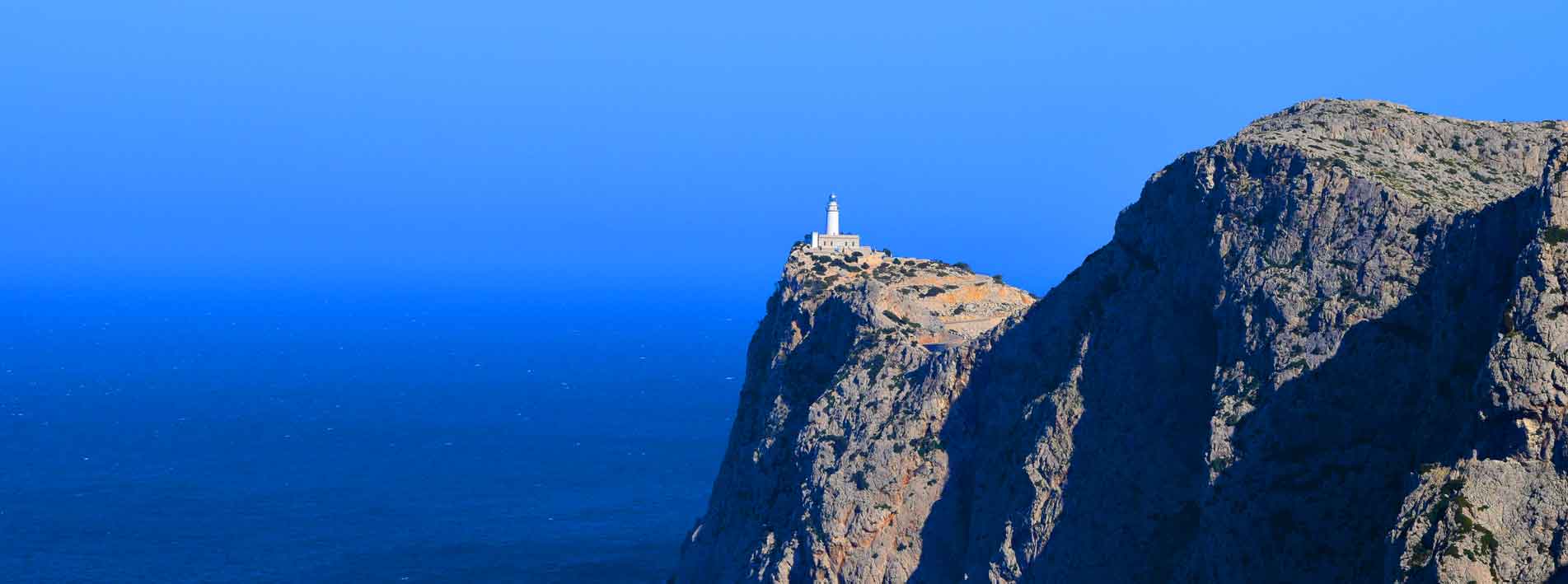 The Cultural Landscape of the Sierra de Tramuntana
The Cultural Landscape of the Sierra de Tramuntana
This is a mountain range that includes terraced valleys, creating a landscape of great cultural and geological value. The Cultural Landscape of the Sierra de Tramuntana in Mallorca is a UNESCO World Heritage Site recognized for its unique interaction between humans and nature. Its main features are terraced slopes, a complex network of irrigation systems of Arab origin and dry stone constructions, which have been crucial for the use of the land over the centuries. This landscape is an exceptional example of Mediterranean agriculture, mixed with charming villages and a rich history.
Main features
Terrace and irrigation system: The landscape features a system of terraces that cut into the slopes, along with a sophisticated network of canals and water mills of Arab origin that managed water resources for rainfed crops and orchards.
Dry stone constructions: These are a key feature of the landscape, ranging from terraced walls to houses and corrals.
Natural environment: The mountain range is the backbone of the island, with peaks such as Puig Major (1,445 m) and Puig de Massanella (1,364 m) and stretches for 90 kilometers in the northwest of Mallorca.
Cultural and tourist attractions
Villages and municipalities: It covers 20 municipalities, including Deià, Sóller, Valldemossa, Fornalutx, Pollença and Andratx.
Hiking: It is an ideal destination for hiking, notably the “Ruta de Pedra en Sec” (GR 221), a trail of more than 85 kilometers that runs through the mountains.
Culture and heritage: The area has inspired artists such as Chopin, Unamuno and Camilo José Cela and is home to monuments such as the Cartuja de Valldemossa and the gardens of Son Marroig. The Sanctuary of Lluc, meanwhile, is an important place of pilgrimage dedicated to the Virgin of Lluc, located in the middle of a forest.
What to see and do in the Sierra de Tramuntana
The diversity of the Sierra de Tramuntana allows you to discover the geographical complexity of Mallorca, from the peaks to the valleys and coastal cliffs, offering a much richer experience than the coasts and other areas or tourist resorts on the island.
Hiking: Follow the famous GR 221 trail, or Ruta de la Pedra en Sec, to discover the mountains on foot.
Visit villages: Explore charming villages such as Valldemossa, Sóller, Banyalbufar and Fornalutx, with their stone houses and cobbled streets.
Viewpoints: Enjoy spectacular views from historic viewpoints such as the Ses Ànimes Viewpoint.
Gastronomy: Try the local cuisine and produce, such as olives and oranges.
Culture and Heritage: Admire the dry stone constructions, hydraulic systems and the Monastery of Lluc, an important Marian center.
Recommendations for travelers
Travel prepared: It is recommended that you wear appropriate footwear and clothing for hiking and bring enough water and energy supplements if you are going to be doing strenuous physical activity.
Drive with caution: The roads are narrow and winding, so you should drive carefully.
Don’t go alone: It is not advisable to go hiking alone due to the difficulty and characteristics of the trails.
Do not light fires: In the Serra de Tramuntana, fires cannot be lit in forest areas during the danger season (May 1 to October 15). Outside this period, campfires are only allowed in designated areas authorized by the island’s forestry authorities. Only in recreational areas and you should always check the signs and weather conditions. IMPORTANT: It is strictly forbidden to light fires outside designated areas or portable barbecues.
Respect nature: The mountains are a protected natural area and it is important to respect their flora, fauna and cultural structures. Responsible visiting is encouraged, respecting the flora and fauna and leaving no waste behind in order to preserve this natural treasure.
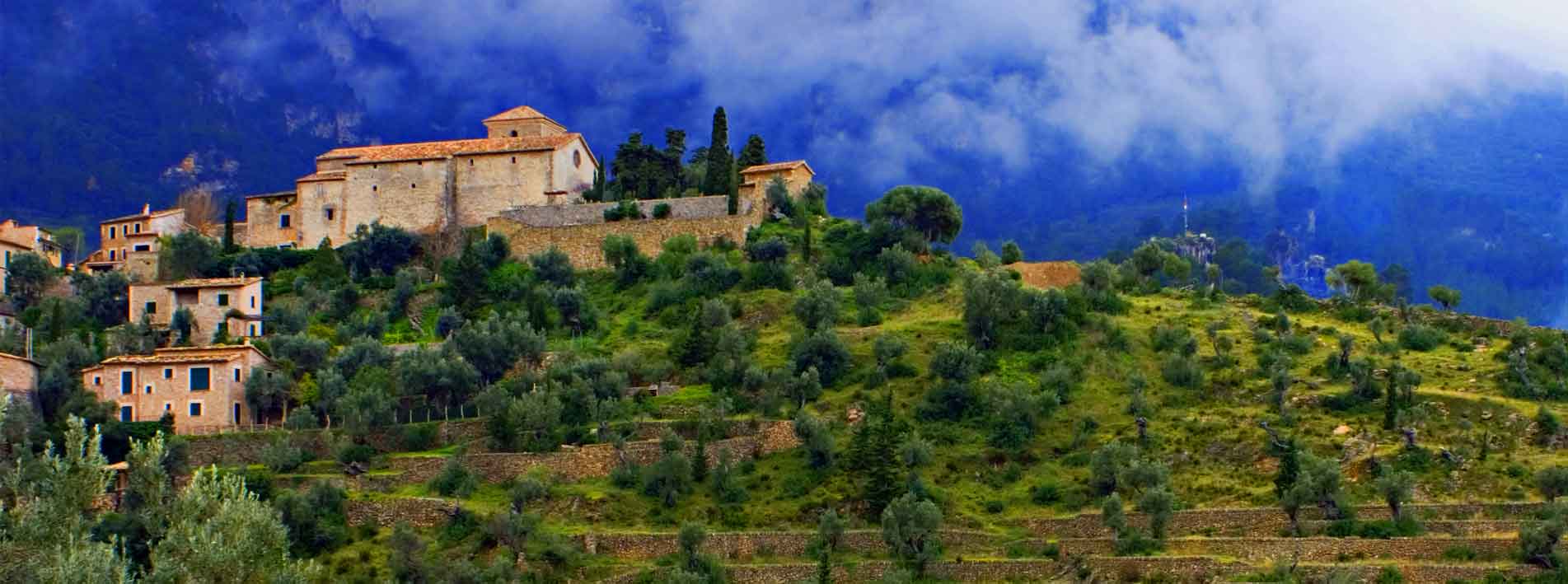 Accommodation and hospitality in Serra Tramuntana
Accommodation and hospitality in Serra Tramuntana
In the Serra Tramuntana, accommodation options range from boutique hotels and agrotourism establishments to vacation apartments and mountain refuges. Establishments are usually spread between coastal areas and inland towns, offering a wide range of services, from accommodation with swimming pools and mountain views to more basic and economical options in camping areas or shelters for hikers.
Types of accommodation in the Serra de Tramuntana
Hotels and apartments: These are located both in coastal areas and inland villages. They range from large chain hotels to boutique hotels and tourist apartments with kitchen facilities.
Agrotourism: These offer a rural experience with accommodation in apartments or rooms on farms, often with a swimming pool, solarium and large gardens. Many are in perfect settings for hiking and cycling.
Refuges and campsites: For hiking enthusiasts, the Balearic government manages refuges and camping areas within the Natural Park, although advance booking and payment of a fee are required.
Things to keep in mind
Location: Accommodation availability can vary greatly depending on location. The coast tends to have more hotels and apartments, while inland areas offer more agritourism and mountain options.
Reservations: For shelters and camping areas, it is essential to book in advance, as services are limited and publicly managed.
Activities: When looking for accommodation, consider the activities that interest you. Some agritourism establishments offer bicycle rentals and the mountains are ideal for hiking, cycling and other outdoor activities.

